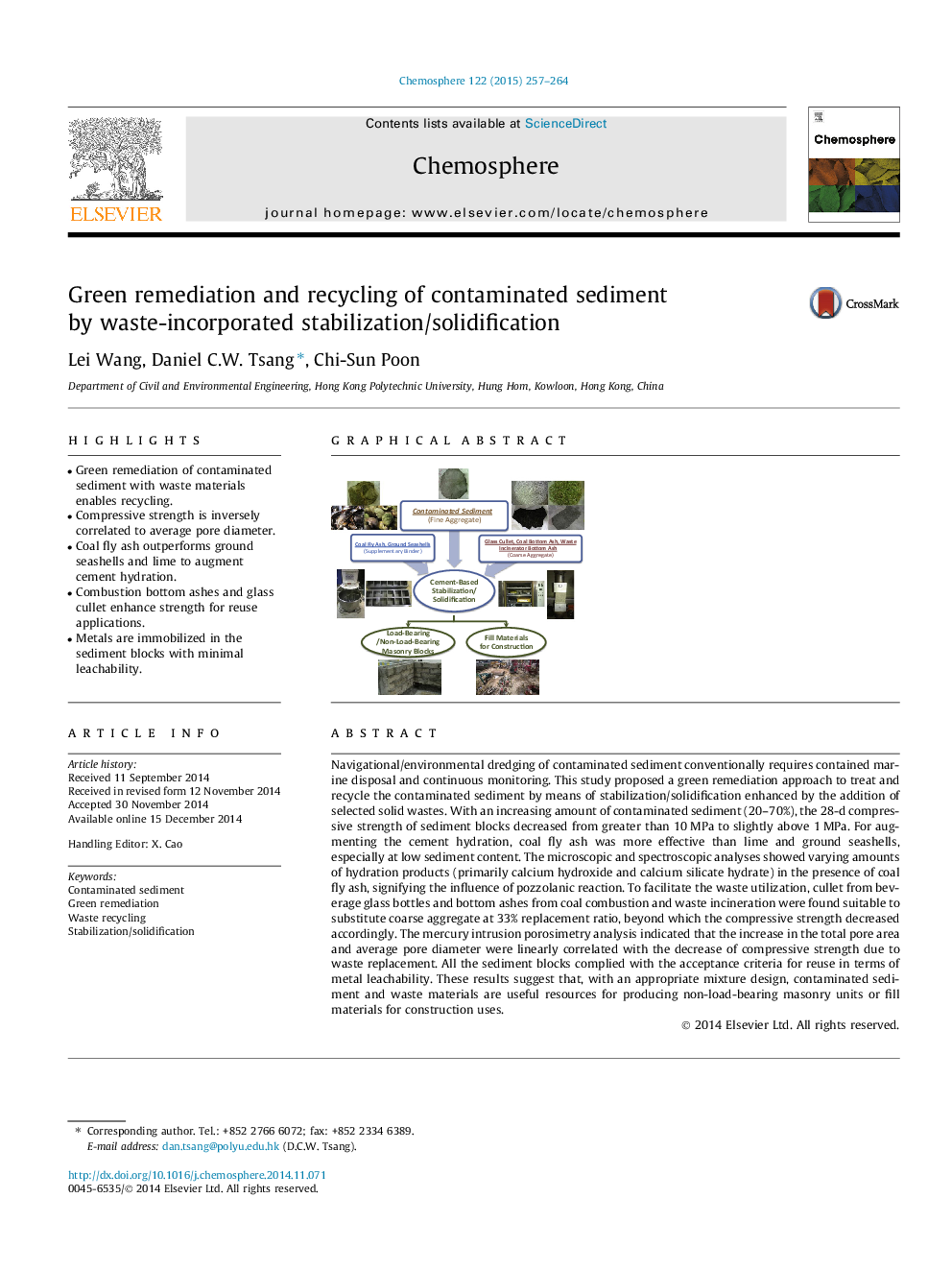| کد مقاله | کد نشریه | سال انتشار | مقاله انگلیسی | نسخه تمام متن |
|---|---|---|---|---|
| 4408401 | 1618849 | 2015 | 8 صفحه PDF | دانلود رایگان |
• Green remediation of contaminated sediment with waste materials enables recycling.
• Compressive strength is inversely correlated to average pore diameter.
• Coal fly ash outperforms ground seashells and lime to augment cement hydration.
• Combustion bottom ashes and glass cullet enhance strength for reuse applications.
• Metals are immobilized in the sediment blocks with minimal leachability.
Navigational/environmental dredging of contaminated sediment conventionally requires contained marine disposal and continuous monitoring. This study proposed a green remediation approach to treat and recycle the contaminated sediment by means of stabilization/solidification enhanced by the addition of selected solid wastes. With an increasing amount of contaminated sediment (20–70%), the 28-d compressive strength of sediment blocks decreased from greater than 10 MPa to slightly above 1 MPa. For augmenting the cement hydration, coal fly ash was more effective than lime and ground seashells, especially at low sediment content. The microscopic and spectroscopic analyses showed varying amounts of hydration products (primarily calcium hydroxide and calcium silicate hydrate) in the presence of coal fly ash, signifying the influence of pozzolanic reaction. To facilitate the waste utilization, cullet from beverage glass bottles and bottom ashes from coal combustion and waste incineration were found suitable to substitute coarse aggregate at 33% replacement ratio, beyond which the compressive strength decreased accordingly. The mercury intrusion porosimetry analysis indicated that the increase in the total pore area and average pore diameter were linearly correlated with the decrease of compressive strength due to waste replacement. All the sediment blocks complied with the acceptance criteria for reuse in terms of metal leachability. These results suggest that, with an appropriate mixture design, contaminated sediment and waste materials are useful resources for producing non-load-bearing masonry units or fill materials for construction uses.
Figure optionsDownload as PowerPoint slide
Journal: Chemosphere - Volume 122, March 2015, Pages 257–264
